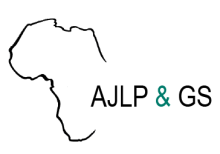/ library resources
Showing items 1 through 9 of 49.In most sub-Saharan African countries, staple cereal grains harbor many fungi and some produce mycotoxins that negatively impact health and trade.
The Zimbabwean dairy industry is massively underperforming, as evidenced by a reduction in milk yield from 262 million liters in 1990 to 37 million liters in 2009 and a steady but slow increase to 82 million liters in 2021.
ontext and background Agriculture, and consequently land is considered a potential to increase economic growth and development than any other sector.
Adaptation to climate change involves changes in agricultural management practices in response to changes in climate conditions.
Our goal is to provide the scientific basis for development investments and policies that promote more productive, profitable agriculture, and healthier diets at no environmental cost. Low-income, smallholder farmers face significant challenges across sub-Saharan Africa (SSA).
Soil organic carbon (SOC) is a major attribute of soil quality that responds to land management activities which is also important in the regulation of global carbon (C) cycling.
In the year 2000 the government of Zimbabwe launched the Fast Track Land Reform Programme (FTLRP) as part of its on-going land reform and resettlement programme. The main premise of the programme is to address the racially skewed land distribution pattern inherited at independence in 1980.
Three smallholder villages located in typical communal (from 1948), old (1987) and new (2002) resettlement areas, on loamy sand, sandy loam and clay soils, respectively, were selected to explore differences on natural resource management and land productivity.
Pagination
Land Library Search
Through our robust search engine, you can search for any item of the over 73,000 highly curated resources in the Land Library.
If you would like to find an overview of what is possible, feel free to peruse the Search Guide.




